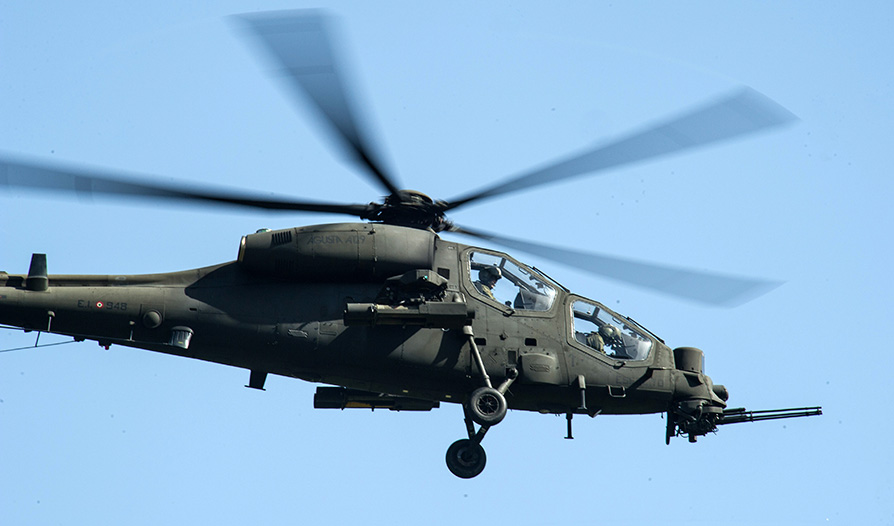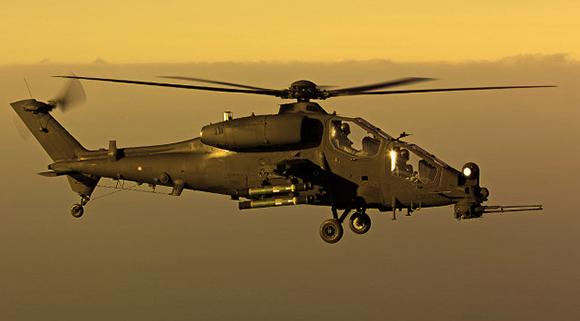The chairman of the Gentiloni council of ministers is in Washington for a bilateral meeting with President Trump.
Among the various topics dealt with in international politics there will certainly be the one concerning the war against ISIS with particular attention to the situation in Iraq; in this regard there may be a request by the White House for a greater commitment on the ground of the Italian military.
Currently, the Italian Army is mainly involved in the training of Peshmerga, an activity in which a carabinieri rate also participates. Since last year, the Italian military has been responsible for the defense of the Mosul dam, with the 1 ° Bersaglieri regiment of the mechanized brigade Garibaldi (about 500 military); in addition, at the coalition base near Erbil, there is a Task Group with 4 NH90 medium transport helicopters and 4 AW129D helicopters Mongoose of the 5 ° Regiment AVES Rigel, a platoon of the 66 ° aircraft regiment Trieste of the aircraft brigade Friuli helps to provide assets of Personnel Recovery - in the past, the concept of Personnel Recovery (PR) tended to identify with that of Combat Search and Rescue (CSAR) but this vision, in light of the current scenarios, in which military assets conduct operations distributed within crisis theaters in the presence of a hybrid threat, no longer appears valid. Therefore, a new approach to the problem was required in an inter-force perspective that allows the recovery of isolated or endangered personnel in a short time through targeted and timely interventions - in support of the Coalition Forces engaged in the offensive against the Islamic state.
 The NH90 is the result of a collaboration between Italy, France, Germany, Holland and Spain; is proposed in the TTH version, for terrestrial use and NFH (NATO Frigate Helicopter) for naval use. It has a maximum take-off weight of 10600 kg, with a payload of 4200 kg; the cruising speed is 260 km / h and a maximum range - with 2500 kg of load - of 900 km. The endowment of electronic systems is very sophisticated, in fact it includes a terrain following radar, FLIR and electronic countermeasures; they can find room on board, on shock-absorbing seats, up to fully equipped military 20. As armament they can be equipped with two side minigun M134D complexes with six rotating 7,62x51 caliber rods, complete with swiveling platform. The operation takes place through an electric motor that allows the rotation of the barrels. In this way it is possible to obtain a high rate of fire (approximately 3000 strokes per minute), particularly suited to the needs of the helicopter.
The NH90 is the result of a collaboration between Italy, France, Germany, Holland and Spain; is proposed in the TTH version, for terrestrial use and NFH (NATO Frigate Helicopter) for naval use. It has a maximum take-off weight of 10600 kg, with a payload of 4200 kg; the cruising speed is 260 km / h and a maximum range - with 2500 kg of load - of 900 km. The endowment of electronic systems is very sophisticated, in fact it includes a terrain following radar, FLIR and electronic countermeasures; they can find room on board, on shock-absorbing seats, up to fully equipped military 20. As armament they can be equipped with two side minigun M134D complexes with six rotating 7,62x51 caliber rods, complete with swiveling platform. The operation takes place through an electric motor that allows the rotation of the barrels. In this way it is possible to obtain a high rate of fire (approximately 3000 strokes per minute), particularly suited to the needs of the helicopter.
The exploration and escort component of the Task Group is based on the AW 129D helicopter Mongoose. The latest version of the helicopter has an Israeli Rafael optronic turret on its nose Toplite III, which allows the launch of the missile Spike Extended Range (range of 8000 meters), thus remaining at a safe distance from the operational range of the shoulder-mounted missiles and the fire of 23 mm and 37 mm guns, very common among Islamic militias. The armament is completed by a three-rod 20 mm M197 rotating cannon, which is tilted through a pointing system controlled by the helmet called IHADSS (Integrated Helmet and Display Sight System), an integral part of the weapon system, which allows the cannon to follow the movement of the co-pilot's head or the pilot responsible for the shot. Four motion sensors are mounted on the helmet, they are detected by two fixed sensors at the corners of the cockpit. Before take-off the operator aligns the helmet with the aiming system which, from the movement in which it is activated, follows the movements of its head. Furthermore a monocle mounted on the helmet projects on a HDU (Helmet Display Unit) placing the ballistic and emergency ballistic information in front of the right eye, the image is combined with the aiming of the weapon system. In night flight conditions a brightness intensifier (NVG) is used, also mounted on the helmet coupled with the SDU, which allows the pilot to view the same data on the HDU through the displays.
Thanks to a happy choice, the Italian Army is one of the few armies in the world capable of deploying an aircraft capable of performing multiple functions, in an operational spectrum that ranges from escort to (armed) exploration, in international scenarios increasingly characterized by asymmetric threats.

(photo: web / Leonardo / US Army)












